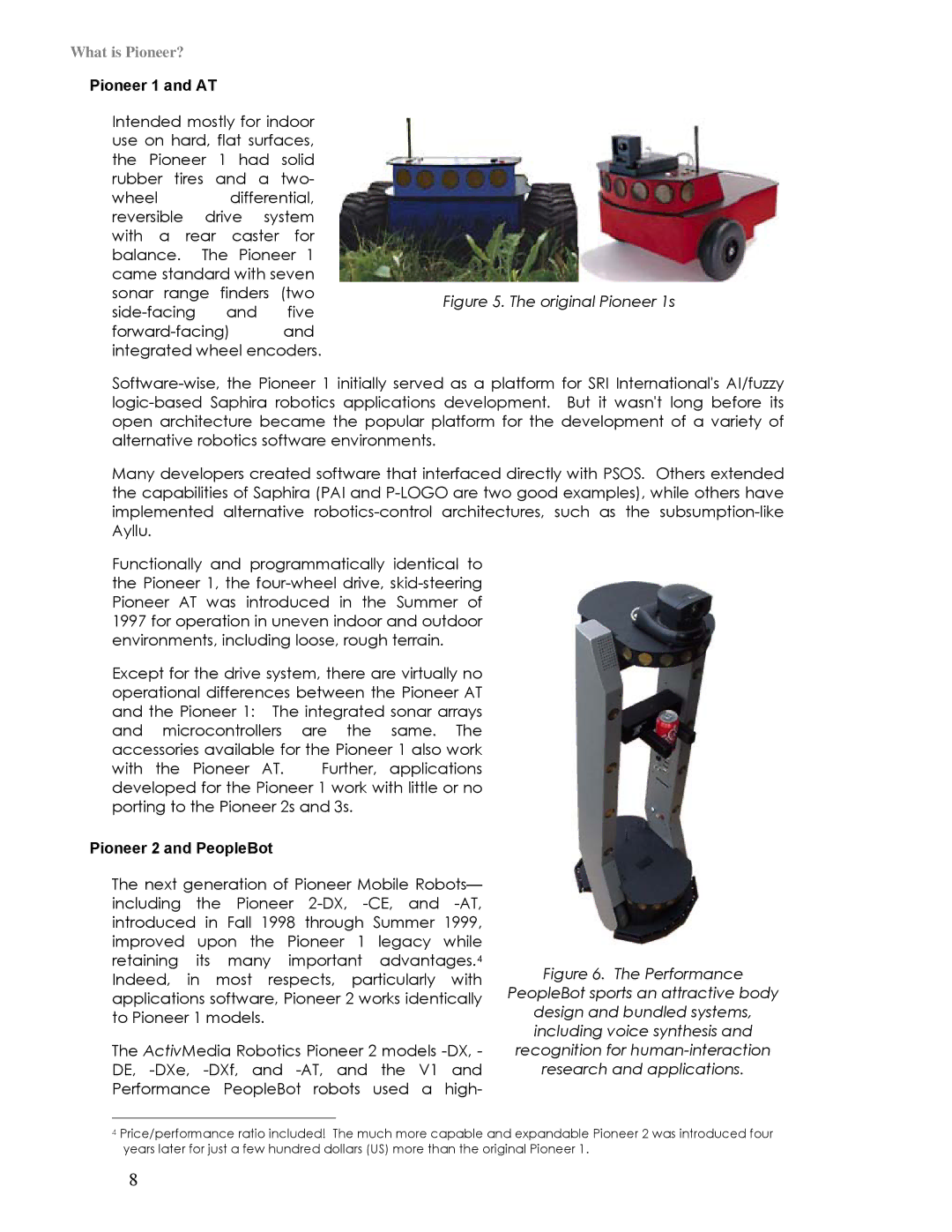
What is Pioneer?
Pioneer 1 and AT
Intended mostly for indoor use on hard, flat surfaces, the Pioneer 1 had solid rubber tires and a two-
wheel differential, reversible drive system with a rear caster for balance. The Pioneer 1 came standard with seven
sonar range finders (twoFigure 5. The original Pioneer 1s
Many developers created software that interfaced directly with PSOS. Others extended the capabilities of Saphira (PAI and
Functionally and programmatically identical to the Pioneer 1, the
Except for the drive system, there are virtually no operational differences between the Pioneer AT and the Pioneer 1: The integrated sonar arrays and microcontrollers are the same. The accessories available for the Pioneer 1 also work
with the Pioneer AT. Further, applications developed for the Pioneer 1 work with little or no porting to the Pioneer 2s and 3s.
Pioneer 2 and PeopleBot
The next generation of Pioneer Mobile Robots— including the Pioneer
The ActivMedia Robotics Pioneer 2 models
Figure 6. The Performance
PeopleBot sports an attractive body
design and bundled systems, including voice synthesis and recognition for human-interaction research and applications.
4Price/performance ratio included! The much more capable and expandable Pioneer 2 was introduced four years later for just a few hundred dollars (US) more than the original Pioneer 1.
8
